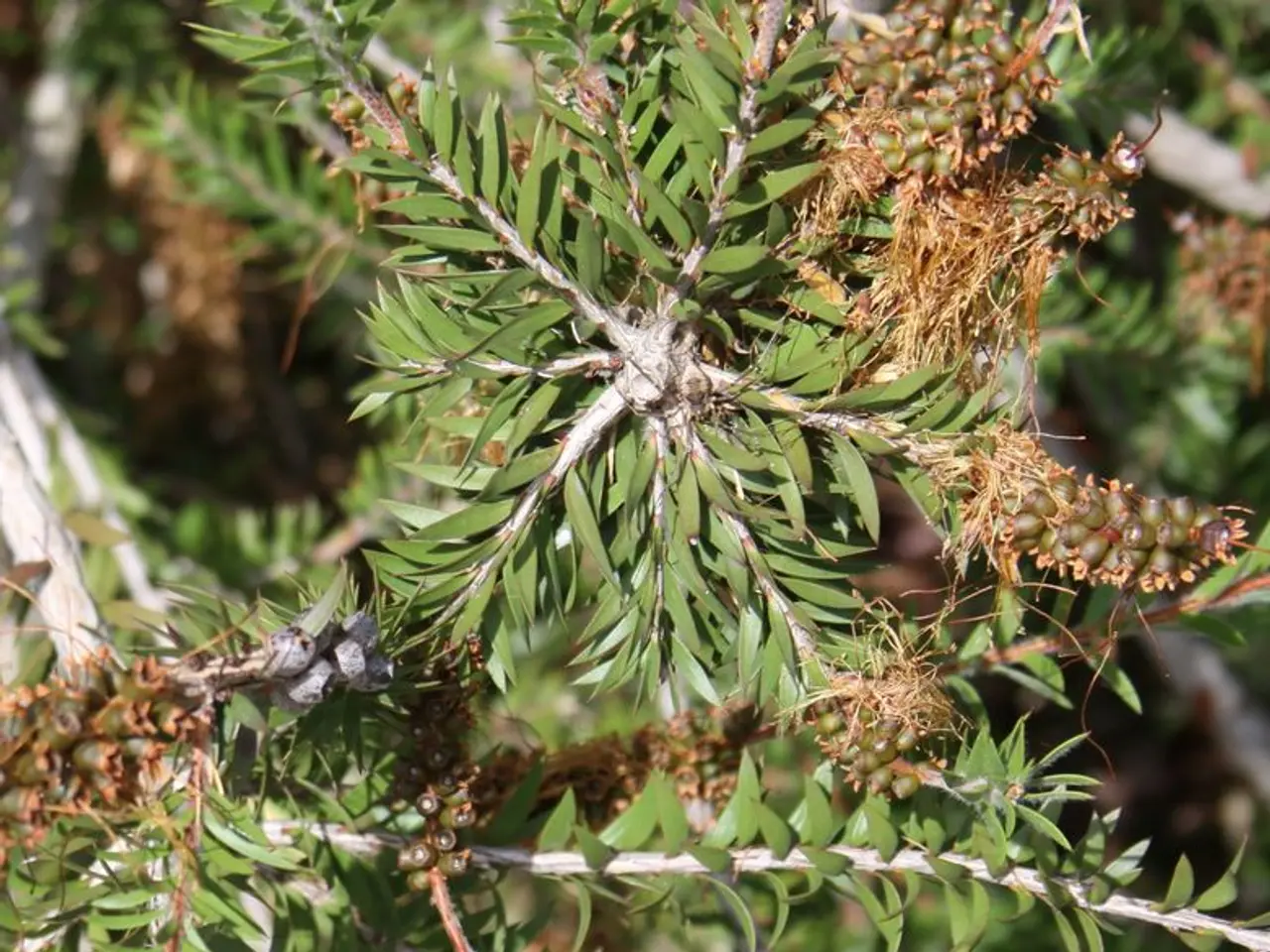Top Picks for Shaping Fruit Trees into Bonsai
Cultivating Edible Fruit Bonsai: A Guide to Success
Fruit-bearing bonsai trees have become a popular choice for garden enthusiasts, offering the unique opportunity to grow miniature versions of cherries, apples, lemons, and more in the comfort of one's home. To ensure these tiny treasures thrive and produce delicious fruits, it's essential to understand the key factors that contribute to their growth.
Light, Water, Nutrients, and Pruning
The best practices for growing and caring for edible fruit-bearing bonsai trees include careful control of light, water, nutrients, and precise pruning techniques to maintain health and fruit production.
Start from Seed or Nursery Stock
You can create fruit bonsais such as lemon, orange, or apple trees from seeds (e.g., lemon pits) or young trees. Growing from seed allows gradual shaping into bonsai form over time.
Watering
Keep the soil consistently moist but avoid overwatering. Well-draining soil is essential to prevent root rot.
Light
Provide bright, indirect light. Fruit bonsais generally require full sun or very bright conditions to produce flowers and fruit.
Pruning
This is critical to bonsai health and aesthetics. Follow the “one-third rule” by never cutting more than one-third of the foliage at once. Prune dead or diseased branches first, then cut for structure—removing upward, downward, or inward growing branches to maintain balanced, natural appearance.
Patience and Observation
Bonsai cultivation is an art of long-term care. Visualizing the future tree shape helps guide pruning and training.
Nutrient Management
Fertilize moderately to support both foliage and fruit development; over-fertilizing can harm bonsai.
Pest Control
Fruit bonsais can attract pests. Regularly inspect and treat appropriately to keep trees healthy.
Seasonal Care
Starting fruit bonsai in winter is ideal for many species. Protect from extreme cold or heat depending on the fruit type.
Specific Requirements for Different Fruit Trees
Some fruit trees have specific temperature requirements for fruit production. For example, tropical varieties like citrus trees prefer warmer temperatures, while temperate species like apple or cherry trees do better in cooler temperatures.
Watering with a moisture meter can help maintain the right soil moisture levels for fruit development. Indoor temperatures should mimic the natural environment of the specific fruit tree species.
Overcoming Indoor Challenges
Some fruit trees may struggle to produce fruit indoors due to light levels, temperature, humidity, and pollination factors. Increasing humidity can help indoor bonsai trees produce fruit. Some bonsai trees rely on cross-pollination from insects or wind to set fruit properly.
Popular Fruit Bonsai Options
Cherry trees (Prunus spp.) are popular for bonsai cultivation due to their beautiful blossoms and delicious fruit. The Yoshino cherry is known for its delicate pink flowers, while the Japanese flowering cherry boasts stunning white blooms. The Japanese Persimmon (Diospyros kaki) produces large, orange fruits with a sweet and tangy flavor. The American Persimmon (Diospyros virginiana) has smaller fruits with a unique, rich taste.
Resources for Learning and Maintaining a Beautiful Bonsai Tree
For those interested in learning more about fruit bonsai cultivation, the Bonsai World platform provides resources for learning and maintaining a beautiful bonsai tree. Happy growing!
[1] Bonsai Empire (2021). Fruit Bonsai: Growing Edible Bonsai Trees. Retrieved from https://www.bonsaiempire.com/fruit-bonsai/
[2] My Bonsai (2021). Growing Fruit Trees as Bonsai. Retrieved from https://www.mybonzai.com/learn/growing-fruit-trees-as-bonsai/
[3] Bonsai Tonight (2021). Fruit Bonsai: Growing and Caring for Fruit Trees as Bonsai. Retrieved from https://www.bonsaitonight.com/fruit-bonsai/
[4] Bonsai4me (2021). Fruit Bonsai: A Complete Guide. Retrieved from https://www.bonsai4me.com/fruit-bonsai-a-complete-guide/
A home-and-garden enthusiast can cultivate various tree species, like lemon, orange, or apple, as edible fruit bonsai by starting from seeds or nursery stock, maintaining the right soil moisture levels, and providing bright, indirect light for fruit development. Choosing a fruit bonsai, such as cherry trees or Japanese persimmon, not only suits one's lifestyle preferences but also offers an artistic element to home décor due to the unique miniature trees and enticing fruits they produce.



